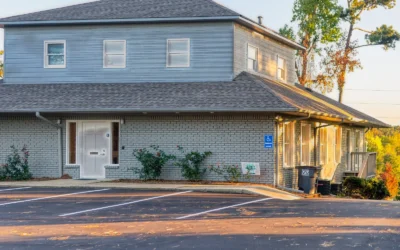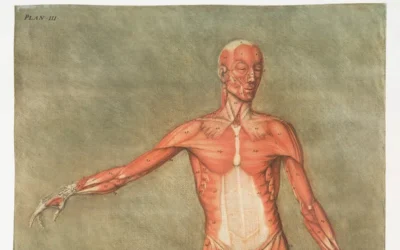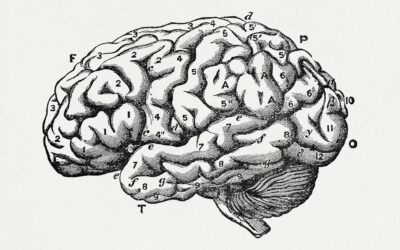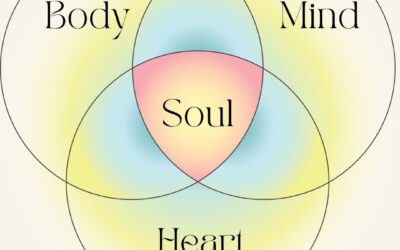Your heart is racing at 3 AM again. You've tried the breathing exercises – in for four, hold for four, out for four. You've downloaded the meditation apps. You've done the yoga, cut the caffeine, exercised regularly. Hell, you could probably teach a masterclass on "coping skills" at this point. Yet here you are, wide awake, body vibrating with that familiar electric dread, Googling "anxiety therapist near me" and wondering why nothing fucking works. Here's what the self-help industrial complex won't tell you:...
Somatic Experiencing in Alabama: Body-Based Trauma Healing for the Heart of Dixie
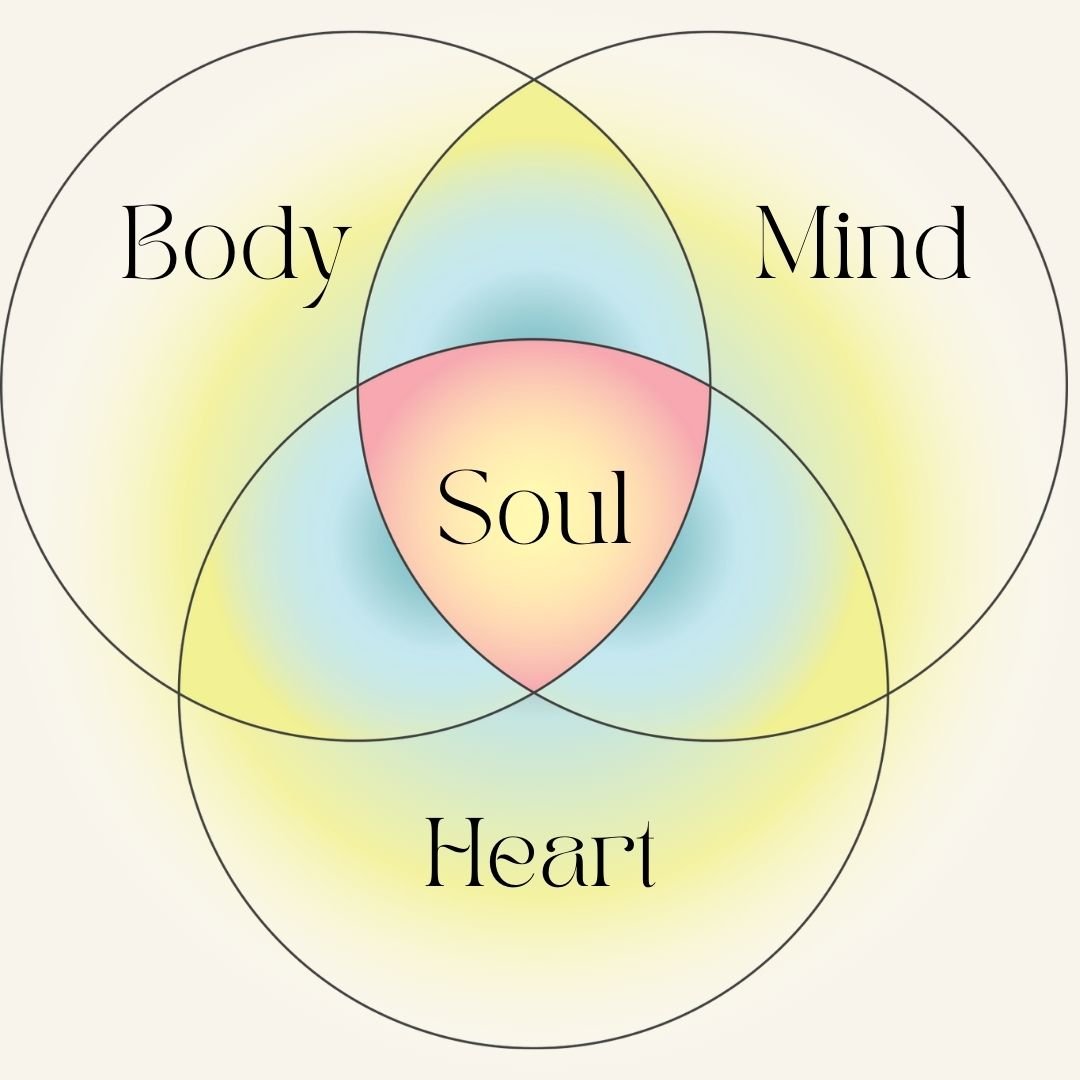
Understanding Somatic Experiencing in Alabama’s Unique Cultural Context
Somatic Experiencing represents a groundbreaking approach to trauma healing that has found profound application in Alabama communities. At Taproot Therapy Collective in Hoover, Alabama, we are proud to offer this innovative body-oriented therapeutic approach developed by Dr. Peter Levine. Our certified Somatic Experiencing practitioners guide you through this process with sensitivity and expertise, helping you reconnect with your body’s innate wisdom and capacity for healing.
Somatic Experiencing works directly with the nervous system to release stored trauma and restore natural self-regulation. This approach recognizes that trauma affects not just the mind but the entire body, creating patterns of tension, dysregulation, and protective responses that can persist long after threatening events have ended. Through gentle guidance and awareness of bodily sensations, clients learn to discharge energy that has been trapped in the body during traumatic experiences.
Alabama’s cultural landscape creates unique considerations for somatic work. Our state’s history includes experiences of natural disasters, economic upheaval, and social change that have impacted communities for generations. The effects of historical trauma, combined with ongoing stressors like severe weather patterns, economic uncertainty, and social transition, create complex needs that benefit from Somatic Experiencing’s comprehensive approach to nervous system healing.
The body-oriented nature of Somatic Experiencing aligns well with Alabama’s outdoor culture and strong connection to the land. Many Alabama residents intuitively understand the connection between physical and emotional wellbeing through their relationships with nature, agriculture, and outdoor recreation. This cultural foundation provides natural support for somatic approaches to healing.
The Science of Somatic Experiencing: How Trauma Lives in the Body
Somatic Experiencing is grounded in the understanding of the body’s physiological responses to trauma, heavily influenced by observations of how animals in the wild process and release stress. Dr. Peter Levine noticed that wild animals regularly experience life-threatening situations but rarely develop the chronic symptoms characteristic of human trauma responses. This observation led to the development of SE as a method for completing the natural recovery process that trauma often interrupts.
When faced with overwhelming threat, the nervous system activates powerful survival responses including fight, flight, or freeze reactions. These responses mobilize tremendous energy to help the organism survive danger. In healthy recovery, this mobilized energy needs to be discharged through natural movement, shaking, or other physical release. However, trauma often interrupts this natural completion process, leaving energy trapped in the nervous system.
Modern neuroscience research supports the physiological foundations of Somatic Experiencing by demonstrating how trauma affects the autonomic nervous system, creating chronic patterns of dysregulation that influence both physical and emotional wellbeing. The polyvagal theory developed by Dr. Stephen Porges provides additional scientific foundation for understanding how SE activates the calming parasympathetic nervous system response, promoting healing and resilience.
Trauma symptoms such as hypervigilance, anxiety, depression, chronic pain, and emotional numbing often reflect the nervous system’s continued preparation for threat even when safety has been restored. Somatic Experiencing helps complete the interrupted stress responses, allowing the nervous system to return to healthy regulation and adaptive functioning.
Research demonstrates that SE can significantly reduce symptoms of PTSD, including anxiety, flashbacks, and nightmares. Studies show improvements in emotional regulation, decreased chronic pain, enhanced sleep quality, and improved overall quality of life for individuals who receive Somatic Experiencing treatment.
Who Can Benefit from Somatic Experiencing in Alabama
Alabama residents dealing with various forms of trauma and stress-related conditions can benefit significantly from Somatic Experiencing. Combat veterans returning from deployment often carry trauma in their bodies that may not respond fully to traditional talk therapy approaches. SE provides tools for addressing the physiological impacts of combat stress while honoring the warrior spirit that characterizes military service.
First responders throughout Alabama, including firefighters, police officers, paramedics, and emergency medical technicians, face regular exposure to traumatic situations that can accumulate in the nervous system over time. Somatic Experiencing helps these essential workers process cumulative stress while maintaining their capacity to respond effectively to emergencies.
Healthcare workers, particularly those who served on the front lines during the COVID-19 pandemic, often experience secondary trauma and chronic stress that manifests in physical symptoms. SE provides tools for addressing both the emotional and physiological impacts of caring for others during crisis situations.
Survivors of natural disasters, which Alabama experiences regularly through tornadoes, hurricanes, and severe weather events, often benefit from SE’s approach to processing shock and restoring a sense of safety and stability. The body-oriented nature of SE helps address the primitive survival responses triggered by natural disasters.
Motor vehicle accident survivors frequently experience trauma that becomes stored in the body, particularly when accidents involve high-speed impacts or life-threatening injuries. Somatic Experiencing helps complete the interrupted survival responses and restore confidence in the body’s capacity for safety and protection.
Childhood trauma survivors often benefit from SE’s gentle approach to accessing and releasing trauma stored in the body from early experiences. The non-verbal nature of much early trauma makes it particularly suitable for somatic approaches that work directly with physiological responses rather than requiring detailed verbal processing.
Individuals with chronic pain conditions often discover connections between their physical symptoms and unresolved trauma stored in the body. SE can complement medical treatment by addressing the nervous system dysregulation that may contribute to chronic pain patterns.
Our Certified Somatic Experiencing Practitioners in Alabama
Kristan Baer serves as our licensed master social worker and certified Somatic Experiencing Practitioner specializing in trauma-focused therapy. She helps clients heal from PTSD, Complex PTSD, trauma, anxiety, and depression through a body-centered approach that honors both individual healing needs and cultural considerations relevant to Alabama communities.
In therapy with Kristan, you’ll learn to tune into what your body is telling you to release trapped traumatic energy and restore a sense of safety and regulation. Her unique blend of psychotherapy and body-centered therapy encourages nervous system regulation and helps restore a healthy, trusting connection with your body’s wisdom and signals.
Kristan’s approach proves particularly valuable for Alabama clients from diverse backgrounds navigating identity issues, cultural transitions, and belonging challenges. Her LGBTQIA+ affirming approach provides specialized support for individuals who may face additional minority stress and identity-related trauma within Alabama’s cultural context.
Her work with somatic experiencing, cultural transitions, and DBT therapy makes her especially suited for supporting students and community members adapting to new environments or processing experiences of discrimination or rejection.
Multiple therapists at Taproot Therapy Collective integrate somatic principles into their comprehensive treatment approaches, ensuring that body-oriented healing remains central to trauma treatment. Our certified therapists bring extensive training in multiple modalities that support the integration of somatic work with other evidence-based approaches.
Joel Blackstock integrates somatic therapy principles into his innovative approach that combines elements from various therapeutic modalities including Jungian therapy, parts-based therapies, and existential approaches. His integration of somatic therapy with brainspotting and other modalities provides comprehensive treatment that addresses both cognitive and physiological aspects of trauma.
The therapeutic relationship represents the foundation for effective Somatic Experiencing work. Our practitioners prioritize creating safety, attunement, and co-regulation before beginning direct somatic work, ensuring that each client feels genuinely supported throughout their healing journey.
The Somatic Experiencing Process: Working with the Wisdom of the Body
Somatic Experiencing sessions follow a gentle, client-paced approach that honors the body’s natural healing wisdom. Rather than forcing change or pushing through resistance, SE practitioners help clients develop awareness of their internal sensations and support the nervous system’s natural movement toward regulation and healing.
Initial Assessment and Preparation begin every Somatic Experiencing treatment by establishing safety and building resources that support nervous system regulation. Your practitioner will help you identify internal and external resources that provide comfort, stability, and a sense of safety before beginning direct trauma work.
Developing Body Awareness forms a crucial foundation for SE work. Many trauma survivors have learned to disconnect from their bodies as a protective mechanism, making it important to slowly and gently rebuild this connection. Practitioners guide clients in developing what SE calls “felt sense” – the ability to notice subtle internal sensations and the stories they tell.
Tracking Sensations involves learning to follow the natural flow of sensations in the body without trying to control or change them. This process helps clients develop tolerance for internal experience while building confidence in their body’s innate healing capacity.
Titration represents a key principle of Somatic Experiencing that involves working with small amounts of activation or distress at a time. Rather than overwhelming the system, titration allows for gentle processing that builds resilience and prevents retraumatization.
Pendulation describes the natural movement between states of activation and calm that characterizes healthy nervous system functioning. SE practitioners help clients notice and support this natural rhythm, building capacity for self-regulation and resilience.
Discharge and Completion support the nervous system’s natural tendency to release trapped survival energy through movements, sounds, or other physical expressions. This process helps complete the interrupted stress responses that contribute to ongoing trauma symptoms.
Integration and Resourcing ensure that gains from SE work become integrated into daily life and that clients develop ongoing tools for maintaining nervous system health and resilience.
Conditions Effectively Treated with Somatic Experiencing
Post-Traumatic Stress Disorder responds particularly well to Somatic Experiencing because PTSD symptoms often reflect nervous system dysregulation rather than purely psychological distress. SE helps address the physiological roots of hypervigilance, flashbacks, nightmares, and emotional numbing by supporting nervous system return to healthy regulation.
Anxiety and Panic Disorders frequently involve chronic nervous system activation that maintains the body in a state of hypervigilance and readiness for threat. Somatic Experiencing helps calm this chronic activation while building capacity for self-soothing and emotional regulation.
Depression, particularly when related to trauma or chronic stress, often involves nervous system shutdown or collapse. SE can help restore vitality and engagement by supporting the nervous system’s natural movement toward activation and aliveness while maintaining appropriate boundaries and self-protection.
Chronic Pain conditions often have complex relationships with nervous system dysregulation and unresolved trauma. While SE doesn’t replace medical treatment for pain conditions, it can address the nervous system components that may contribute to chronic pain patterns and help individuals develop better relationships with their physical experience.
Sleep Disorders frequently reflect nervous system hyperactivation that prevents the natural transition into restful sleep states. Somatic Experiencing helps support nervous system regulation that promotes healthy sleep patterns and restorative rest.
Attachment and Relationship Issues often stem from early experiences that disrupted healthy nervous system co-regulation with caregivers. SE helps rebuild capacity for healthy connection and communication by addressing the physiological foundations of attachment and safety.
Accident and Medical Trauma benefit from SE’s specific protocols for processing shock and restoring confidence in the body’s safety and integrity. Medical procedures, surgeries, and accidents can trigger profound survival responses that need completion for full recovery.
Integration with Alabama’s Healthcare and Wellness Communities
Somatic Experiencing integrates well with Alabama’s existing healthcare and wellness communities. Medical providers increasingly recognize the connection between nervous system health and physical wellbeing, making SE a valuable complement to medical treatment for various conditions.
Physical therapy and rehabilitation services can be enhanced by incorporating somatic principles that address nervous system regulation alongside physical healing. This integration proves particularly valuable for accident survivors and individuals recovering from surgery or injury.
Mental health treatment benefits from the addition of somatic approaches that address trauma’s physiological impacts alongside cognitive and emotional healing. SE provides tools that complement traditional psychotherapy by working directly with the body’s stored trauma responses.
Integrative and holistic health approaches align naturally with Somatic Experiencing’s recognition of mind-body connections in healing. Nutrition, exercise, meditation, and other wellness practices support nervous system health and enhance the effectiveness of SE treatment.
Spiritual and faith communities throughout Alabama often provide natural support for somatic healing through practices like prayer, meditation, and community support that promote nervous system co-regulation and collective healing.
Somatic Experiencing Techniques and Applications
Grounding Techniques help establish connection between the body and the earth, promoting nervous system calm and stability. These techniques prove particularly valuable for Alabama residents who spend time outdoors and have natural connections to the land through farming, hunting, fishing, or recreational activities.
Boundary Development supports healthy self-protection by helping individuals recognize and respond to their internal signals about safety and threat. This capacity proves essential for trauma survivors who may have lost trust in their body’s protective wisdom.
Resource Building involves identifying and strengthening experiences, relationships, memories, or activities that promote nervous system regulation and wellbeing. Alabama’s strong family and community traditions often provide rich resources for this aspect of SE work.
Orienting Responses help restore the nervous system’s natural capacity to assess and respond to the environment appropriately. Trauma often disrupts this natural orienting capacity, leaving individuals stuck in hypervigilance or shutdown states.
Completion of Thwarted Defensive Responses allows the nervous system to finish self-protective movements or actions that were interrupted during traumatic experiences. This completion process helps restore confidence in the body’s protective capacity.
Vortex Work involves recognizing and supporting the nervous system’s natural spiral movements toward healing and integration. Rather than forcing linear progress, SE honors the circular, spiral nature of healing that allows for integration at deeper levels.
Working with Specific Populations in Alabama
Veterans and Military Families benefit from SE’s respect for the warrior spirit while addressing the physiological impacts of combat and military service. The body-oriented approach honors the physical training and conditioning that characterizes military service while providing tools for processing combat stress and transition challenges.
Agricultural Communities often understand somatic principles intuitively through their work with animals and connection to natural cycles. SE builds on this existing body awareness while providing specific tools for processing the stresses and traumas that can affect farming families.
Industrial Workers in Alabama’s manufacturing and construction industries may experience workplace injuries, accidents, or chronic stress that benefits from somatic approaches. SE provides tools for processing shock and maintaining nervous system health in demanding work environments.
Student Athletes and sports communities can benefit from SE’s attention to body awareness, nervous system regulation, and performance optimization. The approach helps address sports-related injuries and traumas while supporting peak performance through nervous system health.
Faith Communities often find that SE principles align with existing spiritual practices around body-spirit integration and divine healing. SE can complement faith-based healing approaches while providing practical tools for nervous system regulation and trauma recovery.
Myths and Misconceptions About Somatic Experiencing
Common misconceptions about Somatic Experiencing can prevent individuals from accessing this powerful healing approach. Understanding these misconceptions helps Alabama residents make informed decisions about their healing options.
Some people believe that SE requires individuals to relive or re-experience their traumatic memories in detail, but this represents a fundamental misunderstanding of the approach. Somatic Experiencing focuses on working with the physiological effects of trauma in the present moment rather than rehashing details of past events.
Another misconception suggests that SE is only suitable for individuals with severe or complex trauma, but the approach actually has broad applications for anyone experiencing stress, anxiety, chronic pain, or other nervous system-related concerns.
Some believe that SE takes many years to be effective, but many clients experience significant relief within a few sessions, particularly for single-incident traumas. The length of treatment depends on individual circumstances and the nature of the trauma being addressed.
The belief that SE requires extensive physical movement or expression can deter some individuals, but the approach actually emphasizes gentle, subtle awareness rather than dramatic physical release. Most SE work involves very gentle movements and sensations rather than intense physical expression.
Accessing Somatic Experiencing Throughout Alabama
In-Person Services at our Hoover location provide the full range of Somatic Experiencing benefits through direct practitioner-client interaction that supports co-regulation and attunement. The in-person format allows for optimal reading of nervous system states and provides immediate support for regulation.
Teletherapy Options make Somatic Experiencing accessible throughout Alabama, including rural areas that may have limited access to specialized trauma treatment. While the format requires some adaptation, skilled practitioners can guide effective somatic work through secure video connections.
Adaptation for Remote Sessions involves using verbal cues, guided awareness exercises, and self-touch techniques that clients can practice from home. Remote SE sessions may include grounding and centering practices, body awareness meditations, and guidance for self-regulation techniques.
Statewide Accessibility ensures that distance doesn’t prevent Alabama residents from accessing specialized trauma treatment. Our teletherapy services reach communities throughout the state, from urban centers to rural areas that may lack local mental health resources.
Cultural Adaptation ensures that Somatic Experiencing approaches honor Alabama’s diverse cultural communities while providing effective trauma treatment. Practitioners consider cultural factors in body awareness, touch, and expression while maintaining the core principles of SE.
Research and Evidence Supporting Somatic Experiencing
Clinical Research demonstrates the effectiveness of Somatic Experiencing for various trauma-related conditions. Studies show significant reductions in PTSD symptoms, including anxiety, flashbacks, and nightmares, following SE treatment.
Physiological Studies document changes in nervous system functioning following Somatic Experiencing treatment, including improvements in heart rate variability, stress hormone levels, and other markers of nervous system health.
Comparative Studies show that SE can be as effective as other evidence-based trauma treatments while offering unique benefits for individuals who may not respond well to traditional talk therapy approaches.
Long-term Follow-up research indicates that improvements from Somatic Experiencing often continue after treatment ends, suggesting that the approach creates lasting changes in nervous system functioning rather than temporary symptom relief.
Specialized Population Studies examine SE’s effectiveness for specific groups including veterans, accident survivors, and individuals with chronic pain, demonstrating broad applicability across diverse trauma presentations.
Building Resilience and Prevention
Community Resilience building represents an important application of Somatic Experiencing principles beyond individual therapy. Alabama communities facing ongoing stressors like natural disasters, economic uncertainty, or social change can benefit from SE-informed approaches to collective healing and preparation.
Family Systems can incorporate somatic principles to support nervous system co-regulation between family members, particularly important for families dealing with trauma or stress. Children naturally co-regulate with their caregivers, making family-wide nervous system health crucial for child development.
Educational Applications include teaching body awareness and self-regulation skills that help students manage academic stress and social challenges. Schools can incorporate somatic principles to create calmer, more regulated learning environments.
Workplace Wellness programs can include somatic principles to help employees manage stress and prevent burnout, particularly important in high-stress occupations common in Alabama such as healthcare, emergency services, and industrial work.
Cultural Trauma Healing addresses collective experiences of trauma that affect entire communities, using somatic principles to support community-wide healing and resilience building.
Self-Care and Supporting Your Somatic Healing
Between-Session Practices support and enhance your Somatic Experiencing work through simple exercises that promote nervous system regulation. These might include breathing practices, gentle movement, or awareness exercises that build body connection and self-regulation skills.
Lifestyle Modifications that support nervous system health include regular sleep schedules, appropriate exercise, nutritious eating, and stress management practices that complement SE treatment. Alabama’s outdoor culture provides natural opportunities for nervous system supporting activities.
Nature Connection offers powerful support for somatic healing through time spent outdoors, gardening, or other earth-connected activities that promote grounding and nervous system regulation. Alabama’s natural beauty provides abundant opportunities for healing connection with nature.
Movement Practices such as yoga, tai chi, walking, or swimming can support Somatic Experiencing by promoting body awareness and gentle energy movement. The key is finding movement that feels good and supports rather than overwhelms the nervous system.
Creative Expression through art, music, writing, or other creative outlets can support somatic processing by providing additional pathways for nervous system expression and regulation.
Community Connection supports nervous system co-regulation through healthy relationships and social support, particularly important in Alabama’s relationship-oriented culture where community connections provide natural healing resources.
Integration with Other Therapeutic Approaches
EMDR and Somatic Experiencing complement each other beautifully, with EMDR therapy providing focused trauma processing while SE addresses the broader nervous system impacts of traumatic experiences. The combination often enhances the effectiveness of both approaches.
Brainspotting and SE can be integrated for particularly powerful trauma processing, with Brainspotting helping access subcortical brain regions where trauma is stored while SE provides tools for nervous system regulation and integration.
Internal Family Systems therapy benefits from somatic principles that help identify and work with different “parts” of the self that may carry trauma or stress. IFS therapy combined with SE provides comprehensive treatment for complex trauma.
Meditation and Mindfulness practices enhance Somatic Experiencing by building present-moment awareness and self-regulation skills. Our guided meditation resources complement SE work with specific practices for nervous system regulation.
Nutritional Support through Hardy Micronutrition can enhance Somatic Experiencing by providing the physiological foundation for nervous system health and optimal brain function.
Getting Started with Somatic Experiencing in Alabama
Initial Consultation provides an opportunity to learn about Somatic Experiencing and determine whether this approach aligns with your healing goals and personal preferences. Your practitioner will explain the process and answer questions about what to expect.
Assessment and Preparation involve understanding your history, current concerns, and building resources that support nervous system regulation before beginning direct somatic work. This foundation ensures that SE work proceeds safely and effectively.
Treatment Planning considers your specific needs, cultural background, and personal circumstances to create an approach that honors your unique situation while providing effective trauma treatment.
Scheduling Flexibility accommodates the diverse needs of Alabama residents, including options for in-person and teletherapy sessions that fit your schedule and geographic location.
Ongoing Support extends beyond individual sessions to include resources, education, and coordination with other healthcare providers as needed to support your comprehensive wellbeing.
Ready to begin your healing journey with Somatic Experiencing? Our certified practitioners are here to guide you with compassion, expertise, and deep respect for your body’s innate healing wisdom.
Contact Taproot Therapy Collective today to schedule your consultation:
📍 Location: 2025 Shady Crest Dr. Suite 203, Hoover, AL 35216
📞 Phone: (205) 598-6471
🌐 Website: GetTherapyBirmingham.com
📧 Contact: Schedule your consultation online
Serving Birmingham, Alabama, and all communities throughout Alabama with expert Somatic Experiencing therapy that honors your body’s wisdom and supports profound nervous system healing.
Joseph LeDoux and the Revolution in Trauma Therapy:
Psychology, Psychology Topics and Articles, Somatic Experiencing In Alabama, Trauma, Depth Psychology, and Social Work, Understanding Neurodivergence and Neurodiversity in Therapy
Understanding Memory Reconsolidation and the Neuroscience Behind Experiential Healing A Paradigm Shift in Understanding Emotional Memory For decades, the field of psychology operated under the assumption that emotional memories, particularly traumatic ones, were indelible marks on the psyche—permanent scars that could perhaps be managed but never truly erased. Joseph LeDoux, a pioneering neuroscientist at New York University, has fundamentally challenged this view through his groundbreaking research on the...
Beyond PTSD: Rethinking Trauma Diagnosis Through Memory Systems and Targeted Treatment
Brainspotting in Alabama: Revolutionary Trauma Therapy for Deep Healing, Executive and Physician Burnout, Phenomenology and Existential Psychology, Psychology Topics and Articles, Recovering from Abuse, Somatic Experiencing In Alabama
The Limitations of Current Trauma Diagnosis Leading trauma experts Gabor Maté and Bessel van der Kolk have long argued that the DSM-5's approach to trauma diagnosis fails to capture the complexity of how trauma manifests in different memory systems and psychological processes. As van der Kolk notes in "The Body Keeps the Score," trauma isn't a singular experience but rather a constellation of disruptions across multiple domains of functioning. Similarly, Maté emphasizes in his work on trauma and addiction...
The Weird History of Psychotherapy Part 3: Wilhelm Reich
History of Psychotherapy, Somatic Experiencing In Alabama
From Reich's Orgone to CBT's Reductionism: How America Lost the Soul of Psychotherapy The Radical Pioneer Who Found Trauma in the Body In 1954, a wild-haired man stood in a field aiming a strange contraption of hollow metal tubes at the sky. This was Wilhelm Reich and his "cloudbuster"—an array of metal tubes he claimed could harness the power of cosmic orgone energy. To understand how we arrived at this bizarre scene, we must trace the extraordinary journey of one of psychology's most brilliant and troubled...
Lifespan Integration Therapy: A Comprehensive Guide to Timeline-Based Healing
Lifespan integration in Alabama, Psychology Topics and Articles, Somatic Experiencing In Alabama, Understanding Neurodivergence and Neurodiversity in Therapy
Lifespan Integration Therapy: A Comprehensive Guide to Timeline-Based Healing An in-depth exploration of Lifespan Integration therapy, its principles, protocols, and effectiveness for trauma healing. What is Lifespan Integration Therapy? Lifespan Integration (LI) is an innovative therapeutic approach that has emerged as a powerful modality for healing trauma and promoting neural integration. Developed by Peggy Pace in the early 2000s, LI has evolved significantly through collaborative refinement into a...
Wilhelm Reich’s Analysis of Fascism: Enduring Wisdom and Controversial Reception
Psychology of Politics, Psychotherapy Biographies: Historical Figures in the History of Psychology, Somatic Experiencing In Alabama
Who Was Wilhelm Reich? Wilhelm Reich, a prominent psychoanalyst and philosopher, made significant contributions to the understanding of fascism through his groundbreaking work, "The Mass Psychology of Fascism." Despite the enduring wisdom of his analysis, Reich's ideas faced numerous challenges and controversies during his lifetime. In this article, we will explore Reich's perspective on fascism, the problems with his adoption by both psychoanalysts and communists, and the lasting impact of his work on political...
What are Wilhelm Reich’s Character Styles?
History of Psychotherapy, Somatic Experiencing In Alabama
Exploring the Intersection of Wilhelm Reich's Character Styles, Somatic Blocks, and Modern Psychotherapy Wilhelm Reich, a prominent 20th-century psychoanalyst, developed a unique perspective on character styles and their relationship to somatic blocks, or what he termed "psychic armoring." His groundbreaking work laid the foundation for contemporary somatic psychotherapies, such as Somatic Experiencing and Internal Family Systems (IFS). In this article, we will delve into Reich's character styles, examine their...
The Power of Archetype Meditation: Unlocking Inner Healing Through Jungian Archetypes
Guided Meditations for Therapy, Somatic Experiencing In Alabama
In a fast-paced world filled with stress and disconnection, finding a path to inner peace and self-discovery is more important than ever. Archetype meditation, a transformative practice rooted in Jungian psychology and Internal Family Systems (IFS) therapy, offers a profound way to reconnect with the multiplicity of your psyche. This blog post dives deep into the ideas, influences, techniques, and purpose of archetype meditation, spotlighting a powerful guided meditation by Joel from the Tapoo Therapy Collective...
Mapping Your Shadow: A Somatic Approach to Jungian Shadow Work
Guided Meditations for Therapy, Somatic Experiencing In Alabama
In the journey of self-discovery and psychological healing, few paths go as deep as shadow work. Today, I want to share insights from our recent meditation session that explores the intersection of Jungian shadow work, somatic experiencing, and other post-Jungian therapeutic approaches. This meditation represents an evolution of how I integrate various therapeutic modalities to help people connect with and transform their relationship to the shadow aspects of their psyche. The Theoretical Foundation This...
Transforming Fear: A Guided Meditation for Phobias and Trauma
Guided Meditations for Therapy, Recovering from Abuse, Somatic Experiencing In Alabama
Do you struggle with a specific phobia, traumatic memory, or overwhelming emotion that feels impossible to face? This guided meditation will help you build the capacity to gradually transform your relationship to this challenging inner experience through the power of visualization and embodied awareness. Mapping the Fear in the Body We begin by bringing the feared thought, memory or sensation to mind and noticing how the body responds. Where do you feel the fear most intensely - perhaps as a knot in the stomach,...
Holographic Memory Theory: Implications for Trauma Healing and Consciousness
Depth Psychology Approaches and Techniques, Jungian Therapy and Depth Psychology, Somatic Experiencing In Alabama
What is Holographic Memory Theory? The holographic memory theory represents one of the most fascinating paradigm shifts in our understanding of the brain, memory, and consciousness. First proposed through the collaborative insights of neuroscientist Karl Pribram and quantum physicist David Bohm, this theory suggests that memory storage and retrieval operate according to principles similar to those found in holography. Unlike traditional models that locate specific memories in discrete neural regions, holographic...
Why You Should Tell Patients to Wear Cowboy Boots
Jungian Therapy and Depth Psychology, Somatic Experiencing In Alabama
Integrating Posture Analysis Into Psychotherapy for Trauma As therapists, we are always looking for new ways to help our patients heal from complex trauma. In my own journey as a practitioner, I've found that incorporating somatic and energetic practices alongside talk therapy can be incredibly powerful in accessing and transforming deep-rooted issues. I have a strong identification with the Magician archetype. When I discovered Brainspotting, a brain-based therapy that uses a pointer (which I jokingly call my...
On Intuition and Trauma:
Psychology Topics and Articles, Somatic Experiencing In Alabama
Neurobiological Intersections and Mistaken Identities Intuition vs. Trauma One of the most common questions that I get as a trauma therapist is "How do you deal with all the crazy people that believe (insert X here) about politics, religion and conspiracy theories. It's a fair question because I work by connecting patients back to their empowered intution and teaching them to tell the difference between it and their own unconcious trauma and the avvoidance and biases itt creates. People are often shockesd to hear...
The Comprehensive Approach to Supporting College Students: Integrating Mind, Body, and Brain
Mental Health and Psychotherapy Resources in Alabama, Mental Health and Trauma Therapy in Alabama, Self Help and Personal Development, Somatic Experiencing In Alabama, Therapy and Crisis Intervention for College Students in Alabama, Understanding Neurodivergence and Neurodiversity in Therapy
Understanding Today's College Student Challenges Today's college students face unprecedented challenges that extend beyond academic demands. From navigating complex social environments to managing their mental health, students need multifaceted support systems that address their holistic wellbeing. The gut-brain connection plays a crucial role in cognitive functioning and mental health, offering innovative pathways for supporting student success beyond traditional interventions. The Neurobiological Foundation of...
Why IFS Works: Philosophy, Biology, and Neuroexperience
History of Psychotherapy, Models of Psychotherapy, Parts Based Therapy, Somatic Experiencing In Alabama
Why Internal Family Systems (IFS) Therapy Works: Exploring the Philosophical, Biological, and Neuroexperiential Foundations The Internal Family Systems (IFS) model, developed by Richard Schwartz, has gained significant recognition as an effective therapeutic approach for treating a wide range of mental health issues. This essay explores the philosophical, biological, and neuroexperiential underpinnings of IFS, shedding light on why this approach works. We will delve into the concept of multiple consciousness, the...
Meta-Cognition: Observing Conciousness Itself to Heal Trauma
Evidence Based Practice and Research Psychology, Recovering from Abuse, Self Help and Personal Development, Somatic Experiencing In Alabama, Trauma Treatment in Alabama
"Pain - has an Element of Blank - It cannot recollect When it begun - or if there were A time when it was not - It has no Future - but itself - Its Infinite realms contain Its Past - enlightened to perceive New Periods - of Pain." -Emily Dickinson, Pain - has an Element of Blank (1890) In this haunting stanza, Emily Dickinson captures the timeless, all-consuming nature of deep emotional pain. When we are in the throes of anxiety, depression, or trauma, it can feel as though this state has no beginning and no end....
PTSD and Intuition: Did Our Reptile Ancestors have a Literal Third Eye?
Anthropology and Evolutionary Psychology for Therapy, Brainspotting in Alabama: Revolutionary Trauma Therapy for Deep Healing, Color Psychology, Jungian Therapy and Depth Psychology, Somatic Experiencing In Alabama
The Subcortical Brain and the Roots of the Unconscious The human mind is a vast and complex landscape, with conscious awareness representing only the tip of the iceberg. Beneath the surface lies a realm of unconscious processes, instincts, and archetypal patterns that profoundly shape our perceptions, emotions, and behaviors. In recent years, advances in neuroscience and depth psychology have begun to shed light on the evolutionary roots of the unconscious mind and its intimate connection to the subcortical brain...
Intuition or Magic? The Brainstem-Intuition Connection
Psychology Topics and Articles, Somatic Experiencing In Alabama, Understanding Neurodivergence and Neurodiversity in Therapy
Unlocking the Power of Unconscious Processing and Pattern Recognition in the Context of Trauma What does the Subcorticle Brain Have to do with Intuition? The brainstem, often overshadowed by the more prominent prefrontal cortex, plays a crucial role in rapid, unconscious information processing. This processing forms the foundation for intuition and deep pattern recognition, abilities that can feel almost supernatural or spiritual in their accuracy and insight. Recent research has begun to uncover the complex...
Recognizing the Unconscious Ways Childhood Trauma Still Shapes Your Life
Psychology Topics and Articles, Recovering from Abuse, Self Help and Personal Development, Somatic Experiencing In Alabama
"There are wounds that never show on the body that are deeper and more hurtful than anything that bleeds." Laurell K. Hamilton, Mistral's Kiss Childhood trauma casts a long shadow. Even if we can't remember the specifics of what happened to us, or even if we think we've "gotten over it," the impact of early trauma has a way of sneaking into our adult lives in subtle but profound ways. This is because trauma, especially when it occurs during the critical developmental years of childhood, doesn't just affect us...
The Window of Tolerance: The Healing Gateway in Somatic Therapy
Alternative Medicine and Holistic Health, Mental Health and Psychotherapy Resources in Alabama, Somatic Experiencing In Alabama
What is the Window of Tolerance in Psychology? In the realm of psychology and personal growth, the concept of the "window of tolerance" has emerged as a powerful framework for understanding the dynamics of stress, emotional regulation, and resilience. First coined by psychiatrist Dr. Dan Siegel, the term refers to the optimal zone of arousal where a person is able to function most effectively - neither too overwhelmed nor too disengaged. Interestingly, while the specific language of the "window of tolerance" is a...
Yoga Therapy and Trauma-Informed Yoga: Healing Mind and Body Through Mindful Practice
History of Psychotherapy, Models of Psychotherapy, Somatic Experiencing In Alabama
What is Yoga Therapy and Trauma-Informed Yoga? Yoga Therapy is a holistic approach to wellness that applies the principles and practices of yoga to promote health and facilitate healing. It goes beyond the general yoga classes found in studios and gyms, tailoring yoga practices to address specific health conditions and individual needs. Yoga therapists work one-on-one or in small groups to create personalized treatment plans that may include physical postures (asanas), breathing exercises (pranayama),...
Sensorimotor Art Therapy: Integrating Body, Mind, and Creativity for Holistic Trauma Healing
History of Psychotherapy, Models of Psychotherapy, Somatic Experiencing In Alabama
What is Sensorimotor Art Therapy ? Sensorimotor Art Therapy is an innovative therapeutic approach that combines principles of sensorimotor psychotherapy, art therapy, and somatic experiencing to address trauma and promote healing. This integrative method focuses on the interconnection between bodily sensations, emotional experiences, and artistic expression. By merging these elements, Sensorimotor Art Therapy offers a unique pathway for individuals to process and overcome traumatic experiences. Unlike traditional...
The Somatic and Neurological Experience of Brainspotting Therapy
Alternative Medicine and Holistic Health, Mental Health and Psychotherapy Resources in Alabama, Somatic Experiencing In Alabama, Understanding Neurodivergence and Neurodiversity in Therapy
The Trauma Healing Power of Brainspotting Brainspotting is a powerful therapeutic approach that engages the body and brain in a unique way to facilitate healing from trauma and emotional distress. Developed by Dr. David Grand, brainspotting evolved out of his work with EMDR (Eye Movement Desensitization and Reprocessing) and taps into the deep connection between the brain's visual system, emotional processing centers, and physiological responses. While the process may vary for each individual, there are some...
Somatic Experiencing: Myths, Misconceptions, and FAQs
Recovering from Abuse, Somatic Experiencing In Alabama, Trauma Treatment in Alabama, Understanding Neurodivergence and Neurodiversity in Therapy
Somatic Experiencing and Lifespan Integration Myth: Somatic Experiencing is Just Another Relaxation Technique One common misconception about Somatic Experiencing is that it is simply a relaxation technique, akin to practices like progressive muscle relaxation or guided imagery. While SE can indeed promote a sense of relaxation in the body, it is a much more comprehensive approach to trauma healing and nervous system regulation. Unlike purely relaxation-based techniques, SE works directly with the physiological...
The Brain-Body Connection: How Somatic Experiencing Works
Somatic Experiencing In Alabama, Trauma Treatment in Alabama, Trauma, Depth Psychology, and Social Work
The Impact of Trauma on the Brain and Body Trauma can have a profound impact on both the brain and the body. When an individual experiences a traumatic event, the body's natural stress response is activated, releasing a flood of stress hormones such as cortisol and adrenaline. This response prepares the body for fight, flight, or freeze, enabling the individual to respond to the perceived threat. However, when the traumatic event is overwhelming or prolonged, the stress response can become dysregulated, leading...
Understanding Somatic Experiencing: A Mind-Body Approach to Healing Trauma
Recovering from Abuse, Self Help and Personal Development, Somatic Experiencing In Alabama, Trauma Treatment in Alabama, Trauma, Depth Psychology, and Social Work
What is Somatic Experiencing? Somatic Experiencing (SE) is a body-oriented therapeutic approach developed by Dr. Peter Levine to address the effects of trauma. It is based on the understanding that trauma is not just a psychological phenomenon but also has a significant physiological impact on the body. SE focuses on the biological responses to trauma and aims to release traumatic shock, which is stored in the body, leading to the alleviation of trauma symptoms. The approach is grounded in the observation of...
Jungian Shadow Somatic Meditation
Guided Meditations for Therapy, Jungian Therapy and Depth Psychology, Somatic Experiencing In Alabama
Meditation to Integrate the Shadow Welcome today we'll embark on a meditation journey to integrate aspects of our shadow – those extreme emotional reactions, feelings of shame, and overwhelming sensations that we often repress and run away from in life. Our journey begins in childhood, where we first learned to feel emotions and respond to the world. These early experiences, along with traumas or overwhelming events in life, contribute to the formation of our shadow. This meditation is designed to guide...
How Is Experiential and Somatic Therapy Different from Cognitive and Behavioral Therapy
Neuroscience and the Brain for Therapists, Somatic Experiencing In Alabama, Understanding Neurodivergence and Neurodiversity in Therapy
What is Somatic and Experiential Therapy? Experiential therapy modalities, such as Internal Family Systems (IFS), Lifespan Integration (LI), Hakomi, AEDP, Psychodrama, and Gestalt therapy, are often considered "non-manualizable" approaches to therapy. This means that they do not follow a specific set of predetermined steps or techniques that can be applied to all clients in the same way. Instead, these modalities require the clinician to rely on their intuition and creativity to adapt the therapy to the...

